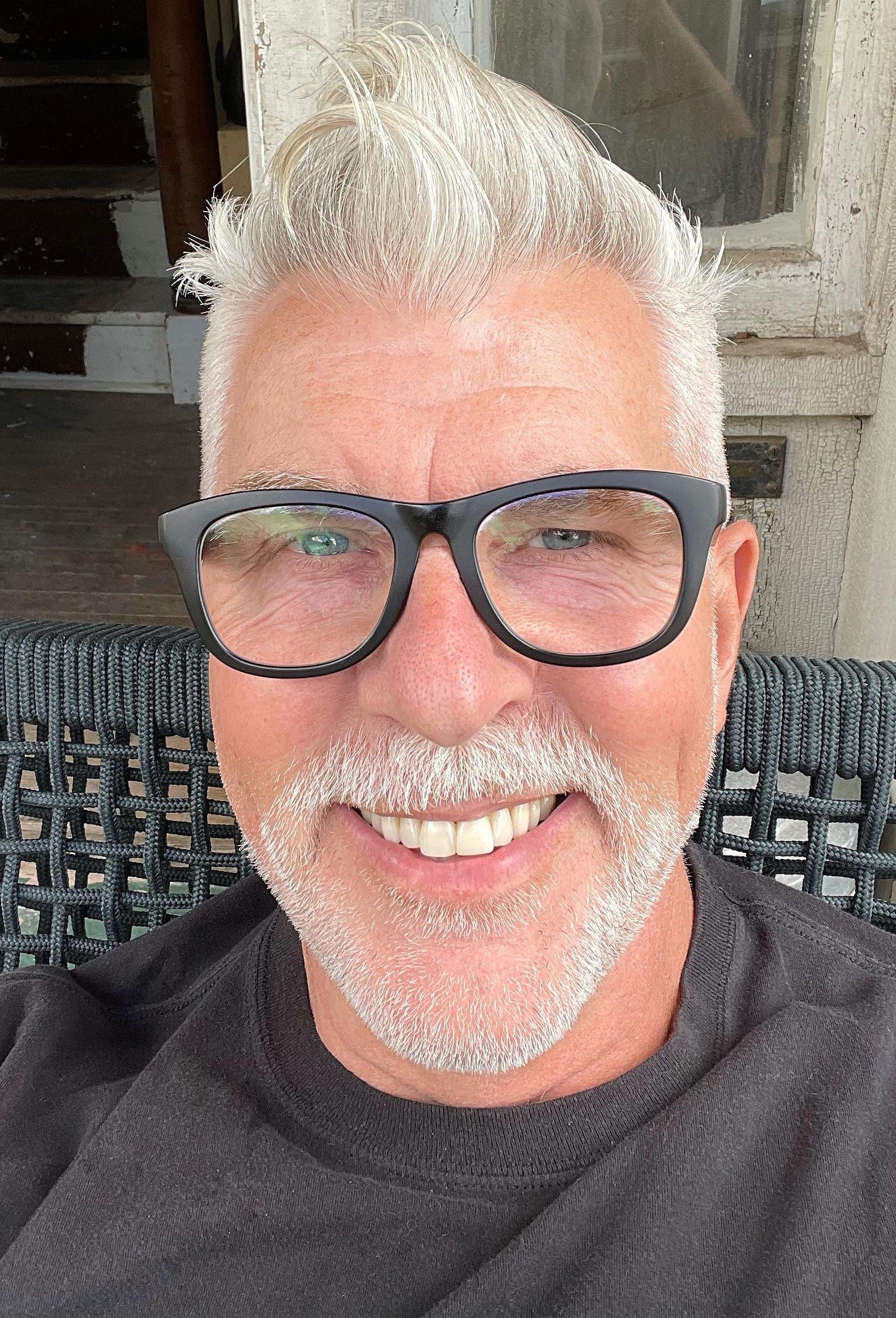Intimate conversations with our greatest heart-centered minds.
I first met Kevin Hertzog back in the day, which in this case means Manhattan in the eighties. The stories are true: the city was wild then. And few more exuberantly so than Kevin. One of my fondest memories of him is descending the main staircase at the Met Fashion Gala in a glimmering ballgown. Others involve clubs, parties, lavish midnight dinners, afterhours clubs, breakfasts at greasy diners. Yet through the haze of our mischief, Kevin was compassionate, articulate, engaged, and outspoken.
So it didn’t surprise me that in 2016 he cofounded Gays Against Guns (GAG) in response to the 2016 mass shooting at Pulse night club in Orlando where forty-nine LGBTQ+ lives were taken. Rather than write letters or sign petitions, GAG uses civil disobedience to bring about change with gun laws. Kevin learned the necessity of civil disobedience from ACT UP in the eighties when lives were on the line. And lives are once more on the line.
GAG joined the Gun Violence Prevention movement at the NYC Pride March, just weeks after the Pulse shooting. More than 750 people marched under GAG’s banner alongside the Human Beings—veiled humans dressed entirely in white carrying placards of someone who died by gun violence. They’re a potent reminder of the prolific cost of guns in America.
Kevin was born in New Jersey and moved to New York City in the early eighties. In his non-civil-disobedience hours he works as a gifted prop stylist and set designer. Clients include Vogue, Vanity Fair, Target, and Kohl’s. He and his beloved dog Buddy now live in Upstate New York in a gorgeous old farmhouse that Kevin is currently refurbishing.
We talked about protest planning, burnout, and the imperceptible-to-us energy that guides us toward joy.
Your mission statement reads: “We are an inclusive direct action group of LGBTQ people and their allies committed to nonviolently breaking the gun industry's chain of death: investors, manufacturers, the NRA and politicians who block safer gun laws.” What do these words look like in action?
You have to tie it to the time that we started, which was June 12, 2016 when the Pulse massacre happened. Barack Obama was the president and we had marriage equality for a while and things seemed to be going great. When the shooting happened, a lot of LGBTQ+ people and other people were horrified that this final frontier of human rights was still being violated in the United States.
The special meaning that it had for the queer community was that we’d always gone to gay bars and clubs as a place to be safe, and to be able to express ourselves without judgment. So when it seemed we were being targeted—at the time this was the largest mass shooting in the United States, to date only Las Vegas has been larger—by this particularly horrific, violent act there was a broad consensus that we had to respond as a community because we felt that we had been attacked as a community. That's why we wanted to center the intersection of the LGBTQ+ community with gun violence prevention.
Can you talk about specifically what GAG does?
When we started, not surprisingly, a lot of the people that showed up were people who had experience in activism. And in the queer community in New York City experience with activism most specifically means ACT UP. When we were dying of AIDS by the tens of thousands, people responded in a forceful way, because our lives were on the line. As a result, people got a lot of valuable experience performing civil disobedience and disruptive activities and that kind of brash activism. I have HIV medication today as a result of the actions that ACT UP took in the eighties and the nineties. So the decision was made that we were going to make civil disobedience a part of our DNA.





